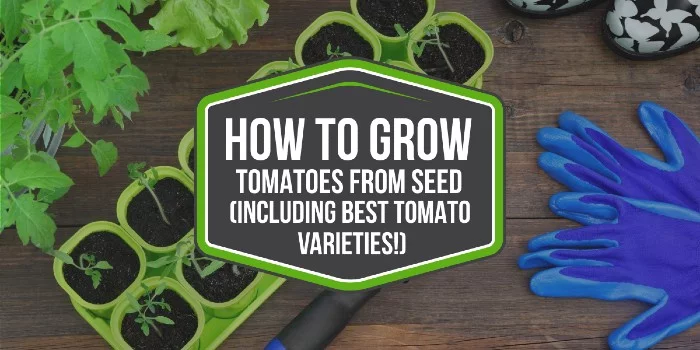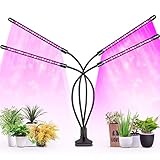It’s hard to beat the taste of homegrown tomatoes harvested fresh from the garden. No wonder tomatoes are one of the first crops most vegetable gardeners begin growing when they are so easy to grow, so productive and have some incredible varieties.
The first step when growing tomatoes is selecting the right variety. There are a few fantastic hybrids that are worth growing but a lot of very unusual old heritage varieties that are ideal for home gardeners.
In this article we will show you how to grow tomatoes from seeds.
How To Choose The Best Tomato Variety
Let’s start with the basics of how to grow tomatoes from seed, choosing a variety.
When it comes to hybrid tomato varieties that are two that really stand out and are worth growing, they are Shirley F1 and Sungold. These stand far above any other hybrids in my opinion and although the seeds are expensive (often 8 seeds for £3.79) they are delicious consistent croppers.
It is when it comes to heritage varieties that the range gets very interesting. Gardener’s Delight is an old variety that is the most popular grown in the UK, it’s an incredibly reliable variety that produces good sweet tomatoes.
Black Cherry has a mass of “black” cherry tomatoes that have a smokey sweet flavour, the colour is closer to a dark brown in all honesty. Principe Borghese has got to be one of my favourites simply for the taste. Money Maker is a popular heavy cropper which gives you medium-sized tomatoes.
These varieties are just some of my favourites but when it comes to tomatoes, it’s worth trying a few different varieties every year until you find some that really suit your personal tastes and growing environment.
If you are interested in unusual tomato varieties, read our article about this topic.
Sowing Your Tomato Seeds
Now let’s get down to the knitty-gritty and learn how to grow tomatoes from seed.
For indoor production, it’s best to begin your seeds in a propagator or on a windowsill in February or March. If the plants are to be grown outdoors, waiting until March or April will make sure the plants don’t need transplanting outside until the last frost has passed.
In a 3 inch (7.5cm) pot plant up to 8 seeds and cover with a light sprinkling of compost.
Water well straight after planting to make sure the seeds have good contact with the soil, the pot shouldn’t be watered again until the plants have germinated.
The germination rate for tomatoes is between 7-10 days and for the first week the tomato seedlings will grow quickly. As soon as the plants have germinated it’s important to remove them from the propagator and put the pot either into a cool greenhouse or windowsill.
Once the plants are about an inch (2.5cm) tall they need to be potted on into the individual pots that they will stay in until they are transplanted to their final positions. Each seedling should be carefully transplanted into a 3 inch (7.5cm) pot and watered well.
If the plants have become tall and “leggy” during their time growing it’s beneficial to transplant the seedlings deeper in their new pot as this will encourage extra root growth.
At this stage the only care needed is regular watering and for the plants to be protected from cold, frost and draughts.
Transplanting Tomato Plants Grown From Seed
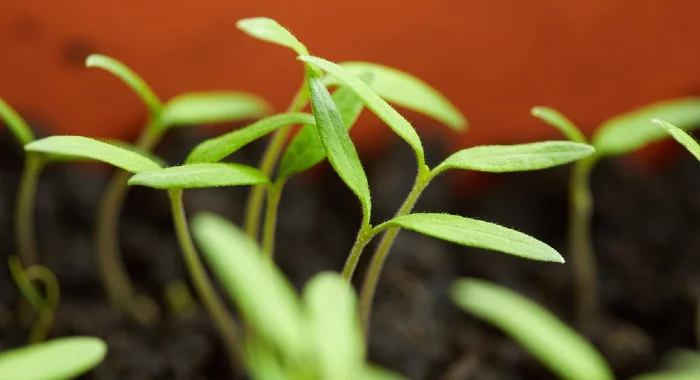
Let’s move on to the next stage of how to grow tomatoes from seed, planting out the seedling.
Plants grown from seed will usually be ready for planting in the final position 8 weeks after sowing. The plants will be 6-8 inches (20-25cm) at this stage – this is also the size that most tomato plants are bought from garden centres.
If planting outdoors all chances of frost must have passed before the plants are moved outdoors. Tomatoes will not survive frost.
Most indoor tomato plants are grown in either grow bags or pots of compost. Grow bags are not ideal but can give a relatively good crop. Compost bought from most suppliers also isn’t good enough quality to grow a REALLY strong tomato crop all season.
Ideally home made compost is the best growing medium but a mix of store bought compost and rotted manure, home made compost or pelleted chicken manure can give a huge good crop.
If the plants are to be transplanted into the open ground outside they should be 18 inches (45cm) between plants in rows at least 24 inches (60cm) apart.
Aftercare & Harvesting Tomatoes
We have almost reached the best part in our guide about how to grow tomatoes from seed, harvesting. But first let’s look at how to care for our tomato plants.
Training tomato plants can seem confusing. Bush tomatoes are the easiest to grow as they do not need any training, they are dwarf and although they usually still need a cane to support them they are left to grow naturally.
Indeterminate and semi-determinate tomato plants are grown as cordons, these will grow tall and require a strong cane and special pruning.
Cordon varieties grow tall and require the “sideshoots” to be removed regularly to ensure the plants grow with one main stem. Sideshoots grow at a 45 degree angle from between the main stem and leaves, with your finger and thumb these can easily be removed while small.
Tie all tomato plants to their canes regularly to prevent any damage once the weight of the fruits begins to grow.
Tomatoes enjoy a good feed regularly, after the first flowers begin to show feeding once a week is ideal. Special tomato feeds can be bought online or in all garden centres but a home made comfry feed or liquid seaweed results in very strong plants.
Harvesting begins when the tomatoes begin to change colour (usually red but some heritage varieties can be black, orange, yellow, white or green when mature).
In cases when it’s not obvious that the tomato is ready a quick squeeze of the tomato should show if it’s soft enough for eating yet, hard tomatoes are not ripe and ones that split when lightly squeezed are over ripe.
Harvesting should continue for several months. Plants grown outdoors will grow well until the first frost but those in the greenhouse can remain alive and continue growing slowly until October or November.
Top Tip: Tomatoes that haven’t ripened naturally on the plant can be placed in the kitchen with a banana and will usually ripen within 7 days.
Common diseases and pests
A big part of finding out about how to grow tomatoes from seed is to learn to protect them from pests and diseases. When you have put in so much effort to, you don’t want lose your plants to diseases or pests.
While tomatoes are easy to grow, they are also prone to problems with diseases and pests. However, there are things you can do to prevent your tomato plants from falling victim to them.
Tomato diseases

The most common disease in tomato plants is blight. There are two varieties, early and late blight, both are caused by fungal infections. Of the two, late blight is the most prevalent and will cause the plant to die.
Blight is a very contagious disease as it is distributed by tiny airborne spores. In the UK these spores are everywhere, so it is important to know how to prevent them from infecting your tomato plants.
The spores are around from late spring to late summer and they thrive in wet and warm weather conditions.
Blight can affect the leaves, stems and fruits. The main symptoms are small brown marks on the leaves which will get bigger as the disease progresses and by and by the leaves will dry up and fall off.
The brown patches will also move to the stems and branches where they will get darker and eventually become soft and sloppy. If the disease is allowed to progress, it will also affect the fruits, with brown marks appearing on the both green and ripe fruits.
Blight can also affect potatoes, so if you spot the same symptoms on your potatoes immediately destroy the plants and any potatoes as they carry the disease. Don’t save any potatoes for the next year if the plant has blight.
Don’t reuse the compost you used for the potatoes the following year.
How to prevent blight
There is no cure for blight, so once you have diagnosed a tomato plant with blight, remove and destroy it. Don’t compost it to avoid infecting the compost.
When you have learned how to grow tomatoes from seed and put all this time and effort in, you don’t want to lose your crops to blight. Thankfully, you can take measures to reduce the risk of blight:
- Consider growing your tomato plants indoors in a greenhouse or lean to as this will protect them from blight.
- Don’t plant your tomatoes in the same place every year, rotate your crop. Blight can overwinter in the soil, so can infect any new plants you plant there.
- When you plant your tomato plants give them enough space to allow air to circulate, because blight will thrive on wet leaves. Better air circulation will help to dry off the leaves. Check your seed packet instructions. Generally, a distance of 18-24 inches between plants should work.
- Keep your plants and their surroundings tidy by removing decaying leaves from plants and the soil.
- When you water your plants, avoid getting the leaves wet. Don’t water from overhead. Try to keep the foliage as dry as possible.
- If you spot signs of blight, destroy infected plants, for example by burning them. Don’t compost them.
- There are tomato varieties that are resistant to blight, such as Crimson Crush, Consuelo and Mountain Magic. While it doesn’t mean these varieties won’t be affected by blight at all, they are less at risk than other varieties.
While tomatoes are easy to grow, they do need good care. Irregular watering can cause stress to the plants, which could result in split fruit. Under- or overwatering can make the leaves go yellow.
However, yellow leaves can also be a sign of a lack of magnesium, which can be remedied by feeding them with liquid fertiliser. I use Levington Tomorite Concentrated Tomato Food.
- Easy to apply simply mix with water in a watering can according to instructions
- For tomatoes and flowering pot plants
- With seaweed extract for maximum growth and better crops
If you prefer to get a fertiliser for general use, I would recommend Envii Seafeed Xtra, it’s an organic all purpose seaweed fertiliser.
- Seaweed plant fertilizer promotes strong growth, increased crop yields and lush foliage
- Multi-purpose fertiliser which includes extra iron and plant based amino acids that feed garden plants and improve yield
- Suitable for use on lawns, fruit, vegetables, flowers, trees and all garden plants
Tomatoes are also sensitive to low temperatures, so make sure you don’t put them outdoors too early. Low night temperatures, below 15°C, can cause the leaves to curl, which won’t affect the plants growth, but it could also cause greenback, which manifests itself by the top of the fruit not ripening. This can also be caused by lack of regular feeding.
Tomato pests
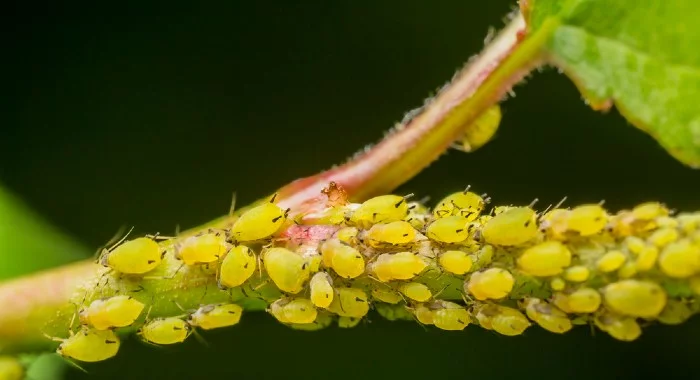
In this section of our guide about how to grow tomatoes from seed we look at pests that might attack our plants.
The most common pest that can befall your tomato plants are aphids. They are small insects that suck the sap from the plants, which can distort the growth and vigour of the plant.
These little insects secrete honeydew which can encourage the growth of sooty moulds and some aphids can also transmit plant viruses. Because they excrete honeydew, ants ‘farm’ them.
They will fight any predators to keep their ‘livestock’ safe, so ants and aphids are not a good combination for gardeners.
How do you know your plant has an aphids problem? You should be able to see aphid colonies with the naked eye. At first they are most likely found on the underside of young leaves, but if the number grow, they can be seen all over the plant.
Another sign of the presence of aphids are young leaves that are curled or distorted, which can weaken the plant as it will impede its growth.
How to get rid of aphids on your tomato plants
Aphids are one of the most annoying pests for any gardener, because a heavy infestation can kill your plants. So no guide about how to grow tomatoes from seed would be complete without telling you how you can manage an aphid infestation.
While tomato plants can tolerate large numbers of aphids, you want to make sure that it does not become a severe infestation, as this might hamper your plant’s growth.
There are ways to reduce the number of aphids in your garden, for example by encouraging their predators, of which there are many. Ladybirds, ground beetles, hoverflies, parasitoid wasps and earwigs. Aphids do come out earlier in spring than their predators, but once they appear they do control aphid populations well.
You can buy certain aphid enemies as biological control, or you can try to encourage them into your garden by planting the right plants, such as nettles, marigolds, sedums, foxgloves or similar plants.
You can also remove and kill aphids with your hands, if there are not too many on your plants.
You can also shake your tomato plant carefully and many of the aphids will fall off. Lay some paper on the soil to catch them and remove them to a place where they can’t do any damage.
Washing your plants with soapy water can help to get rid of aphids. You can create your own insecticidal soap by mixing a couple of drops of washing up liquid in a litre of water. Spray this on the plants and the aphids will fall off and some will die. Repeat for four or five days.
You can also buy commercial insecticidal soap, I have used Horticultural Gentle Liquid Soap with Organic Neem Oil before and it worked well.
- Pure organic cold pressed neem oil concentrate unrefined one 1000ml bottle
- Gentle biodegradable liquid soap derived from plant oils one 1000ml bottle
- Combine together with water to form a neem spray or drench
There are a lot of pesticides available, but many of them contain chemicals and will also be harmful to other insects and wildlife, so I would recommend to keep away from anything that is not organic and safe for other insects.
Frequently Asked Questions
Didn’t find what you were looking for? If you still have some questions about how to grow tomatoes from seed, you can find out more about it in our FAQ section.
Why do I have problems with growing my tomatoes from seeds?
This can be caused by several reasons. It could be that your seeds were too old. The seed packet should have a sow by date. While seeds might still germinate even if sown after the sow by date, it’s less likely. Try to buy a new pack of seeds.
The soil could be too hot or too cold. Again, check the packet for the recommended germination temperature.
You can use a soil thermometer to keep an eye on the soil temperature.
- ESSENTIAL SOIL THERMOMETER - A popular soil temperature probe thermometer which can be used in the garden or greenhouse prior to sowing and planting
- STYLISH HANDY DESIGN! - This soil thermometer has a green plastic top to easily hold and insert into soil and compost. The temperature scale is also very clear to read.
- FANTASTIC VALUE - When it comes to soil thermometers, we only offer the best quality and accuracy and this item is just that!
Another reason could be that the soil was too wet or too dry. If the soil is too dry the seeds won’t germinate. And if it is too wet, the seeds might rot. To avoid your seeds failing, make sure you thoroughly wet and drain the soil before sowing.
Keep an eye on the soil and if the surface starts do dry out, put the pot in water and let the soil soak it up until the surface becomes moist. Then drain again to ensure it isn’t too wet.
Your seeds could also have been sown at the wrong depth. The seed packet normally indicates the depth the seed should be sown, so make sure you follow the instructions. As a rule of thumb, the bigger the seeds the deeper they need to be sown. Small seeds, like tomatoes, only need a thin covering of compost.
If you follow our guide about how to grow tomatoes from seed, you should have no problems at all any more.
Why didn’t my seedlings survive?
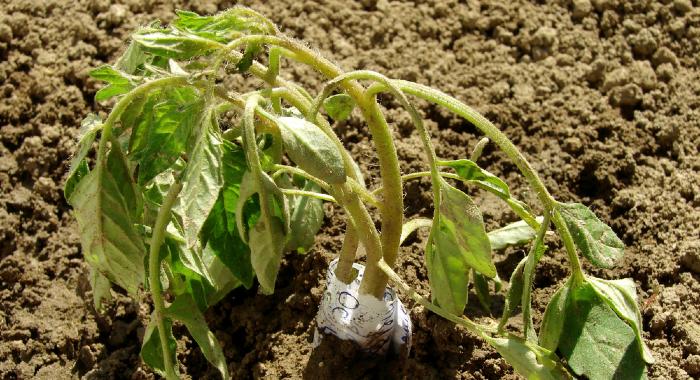
Don’t worry, this guide about how to grow tomatoes from seeds will help you to answer this question.
Again, it might be one of several reasons. The seedlings were transplanted too early or too late. Generally, seedlings are ready to be replanted when they have grown their first adult leaves.
These are the second set of leaves that grow. If the seedlings have been transplanted too late, they have absorbed all the nutrients in the soil, which can lead to diminished growth even after transplanting.
Especially with fast growing plants like tomatoes, it is important to transplant the seedlings before they have taken up all the nutrients in the soil.
An indicator that you have left your seedlings too long is that they look sickly due to the lack of nutrients in the soil.
The seedlings might have been damaged during transplanting. Seedlings are delicate and fragile and can get damaged easily. Be careful when transplanting them. One way to transplant them safely is to press the pot on all sides to loosen the soil and then carefully pull the seedling with the soil out of the pot. Then transplant the seedling with the soil.
Another way to prevent your tomato seedlings from suffering from transplant shock is to start them using soil blocks. Soil blocks are just that, blocks of soil in which you plant your seeds. All you need is a soil blocker to produce your soil blocks. Read our article about soil blocks to learn more about this technique of growing from seed.
If your seedlings just died mysteriously, then it could be that they have been overwatered. This is called damping off and is caused by fungal diseases. So make sure you don’t overwater your seedlings.
Poor light can also cause the seedlings to grow thin and tall, which can cause them to fall over. Try to use the brightest spot in your house, ideally avoiding direct sunlight.
If your seedlings died after you planted them outside, it could be that the weather was not right.
Young plants can easily be damaged by cold, heat, wind or heavy rain, so check what weather conditions your tomato seedlings need before planting them out.
Frost will kill them, so make sure you wait until after the last spring frost. You can also try to harden your plants to get them used to being outdoors, by putting them in a sheltered spot during the day and bringing them inside in the evening. After about a week they should be ready for outdoors.
Can I use seeds from shop bought tomatoes?
The answer is yes, but there are two important things to look out for. Firstly, the variety of the tomatoes you bought. Most supermarket tomatoes are F1 hybrids (or first generation hybrids). This means the plants you grow from their seeds will not be the same.
Instead you want a heritage variety, which are open pollinated, as these will grow identical plants to the one they came from.
Examples for such open pollinated varieties are Gardener’s Delight, Cherokee Purple, Blondkopfchen and Black Cherry. Make sure the tomato seeds you buy will grow well in your climate.
Secondly, the tomatoes must be picked when fully ripe, otherwise the seeds will not be fertile. As tomatoes are generally picked when they are ripe, their seeds should be mature. If you struggle to find heritage tomatoes in your supermarket, buy seeds and use your own tomatoes in the following year.
You can scoop out the seeds and dry them on a piece of paper and then plant them. Or you can also ferment them, which will make them cleaner and easier to store.
Should I use grow lights?
If you want to grow tomatoes inside into winter, then the answer is yes. Light is vital to the growth of any plant, but especially fruit bearing plants such as tomatoes.
Grow lights can be quite expensive, but you will get a better result if you are using them.
Depending on the space you might want to buy overhead lights, like the WAKYME 600W LED Plant Grow Light.
- 【3-year Warranty】Updated Package(2020): 1x Grow light, 1x Thermometer Humidity Monitor, 2x Adjustable Rope, 1x Hanging Kit, 1x Power Cord, 1x User Manual. We offer a 3-year warranty and 30-day money-back guarantee. If you have any problems, please contact us.
- 【Optimal Full Spectrum】Different from others, this led grow light added 2PCS Yellow LED, is beneficial to the synthesis of photosynthetic pigments, promoting energy transmit, improving plant growth quality. It also has universal Blue, Red, IR, UV, White light. Blue and red led are an essential light for all plant growth. Expensive IR UV led can promote plants to defense mechanisms.
- 【Wide Coverage】60PCS SMD led(total 600W) provides uniform illumination. It can replace traditional 600-watt HPS/MH while consumes only 80 watts. Ensures maximum yield with minimum power usage and heat. PAR 436umol/m2s at 24” height, perfect for 2x2ft growing area(Maximum coverage area at 4x4ft at 24” height).
Or you can buy free standing indoor plant grow lights, such as this Plant Grow Light.
- 【Four plant lamps and adjustable design】 The growth lamp is designed with 4 goose necks that can rotate 360°,meet the needs of multi-layer planting. provides a much wider coverage area than grow lamps with shorter LED bulbs in the market . it can emit light in any direction to provide energy to more plants. And you can easily control the distance and the angle between the light and plants. Also, the metal clip is very firm, with two anti-slip pads on it, maximum opening thickness is 6cm
- 【Sun-like Full Spectrum LED Grow Light】With 80 high-quality and high-efficiency LED beads, the wavelength is from 440nm to 660nm, which is similar to natural sunlight, full spectrum. Can be fully absorbed by plants to help accelerate the growth of different plants.Blue light (420nm-460nm) can promote plant germination and seedling growth, red light (630nm-660nm) can promote the plant flowering and fruiting
- 【Intelligent Timing/Memory Function】 The LED plant lamp has 3 timer setting options(3H/9H/12H). When the plants light is turned off, it will automatically remember the previous working state. After the next turn-on, the plants light will directly repeat the state of the last working work, no need to set it again. Plant light will be restarted automatically the next day without manual operation
Now that you know how to grow tomatoes from seed, you can look forward to a summer full of delicious tomatoes in all their glory.
